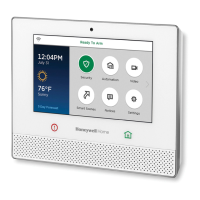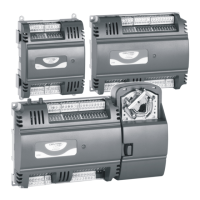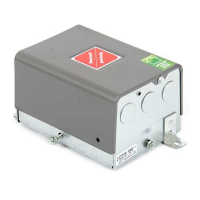Lyric Controller Installation and Reference Guide
- 26 -
System Operation
System OperationSystem Operation
System Operation
(Continued)
(Continued)(Continued)
(Continued)
Event Log
The Lyric Controller Series event log is capable of recording and displaying up to 6,000 system events. These
events are stored locally in the controller, in chronological order, and transmitted to the Central Station. When
the maximum number of events is reached in the Event Log, the system will overwrite the oldest event first. The
type of events that can be recorded is selectable and is programmed in the System Type programming field.
The event log can be reviewed by entering the Installer Programming or Master User Programming mode and
selecting “Events”. Refer to the Lyric Controller User Manual for additional information. The Events and CID
Codes displayed vary according to the options that are programmed. The tables below provide definitions of
the events/codes that may be transmitted to the Central Station and/or displayed by the controller.
Note:
Note:Note:
Note: In the unlikely condition that the backup battery becomes fully discharged when AC power is lost, any system activity
performed after the low battery notification will not be saved in the event log. Additionally, the controller will revert to
the status condition as before the low battery notification.
Contact
Contact Contact
Contact ID
IDID
ID
®
®®
®
Event
Event Event
Event Log
Log Log
Log Codes
CodesCodes
Codes
CID Code
CID CodeCID Code
CID Code
Definition
DefinitionDefinition
Definition
Event Log Display
Event Log DisplayEvent Log Display
Event Log Display
Trouble, Low System Battery
Trouble, RF Receiver Jam Detect
Trouble, Long Range Radio Transmitter Fault
Failure to Communicate Event
Failure to Communicate Event
Trouble, Exit Error Alarm
Trouble, Loss of Supervision RF
Manual Trigger Test Report
Manual Trigger Test Report
*With APL enabled, AlarmNet 360 will generate a special comm. fail message (E316) if it does not hear from a unit within 15 minutes
after a delayed alarm is delivered. This message is meant to alert the Central Station that the system has been tampered with and may
have been compromised.

